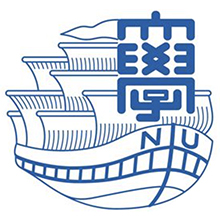 801-900
801-900 


The origin of Nagasaki University can be traced back to the time when Pompe van Meerdervoort, a medical officer of the Naval Training Center, started medical training in a room in the West Office of the Nagasaki Magistrate's Office on November 12, 1857. Although devastated by the Atomic Bombing in 1945, Nagasaki University was established in 1949, consisting of five faculties and one research institute, merging various specialized educational institutions. Now Nagasaki University comprises ten faculties (Global Humanities and Social Science, Education, Economics, Medicine, Dentistry, Pharmaceutical Sciences, Information and Data Sciences, Engineering, Environmental Sciences, and Fisheries, seven graduate schools (Global Humanities and Social Science, Education, Economics, Engineering, Fisheries and Environmental Sciences, Biomedical Sciences, Tropical Medicine and Global Health), Interfaculty Initiative in Planetary Health, the Institute of Tropical Medicine, the Atomic Bomb Disease Institute, and University Hospital. Over 9,000 students and approximately 400 international students are currently studying at Nagasaki University.
 801-900
801-900 
| Subject | Rank |
|---|---|
Dentistry & Oral Sciences | 101-150 |
Human Biological Sciences | 401-500 |
Public Health | 401-500 |
| Undergraduate Programs |
|---|
Global Humanities and Social Sciences |
Education |
Economics |
Medicine |
Dentistry |
Pharmaceutical Sciences |
Information and Data Sciences |
Engineering |
Environmental Science |
Fisheries |
| Graduate Programs |
|---|
Global Humanities and Social Sciences |
Education |
Economics |
Engineering |
Fisheries and Environmental Sciences |
Biomedical Sciences |
Tropical Medicine and Global Health |
Planetary Health |